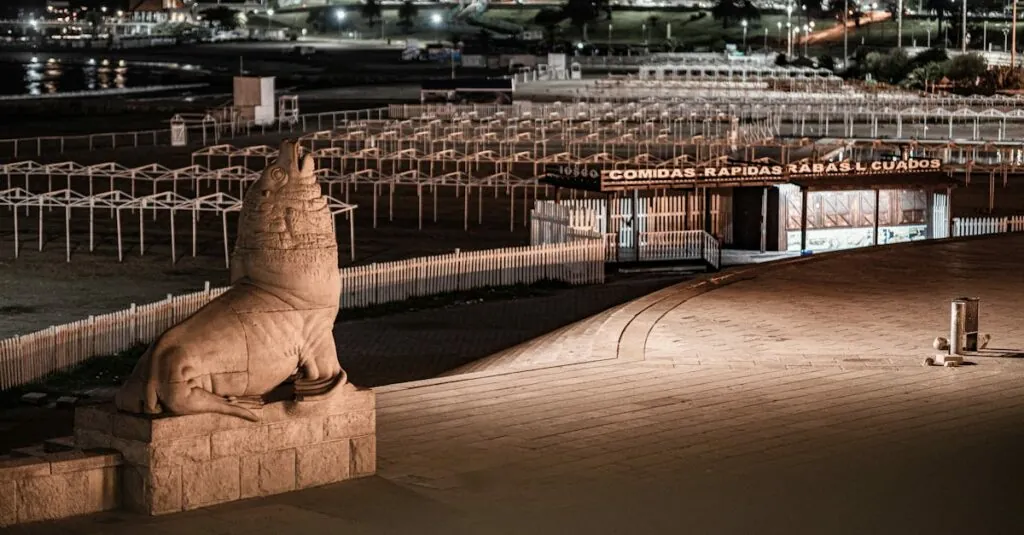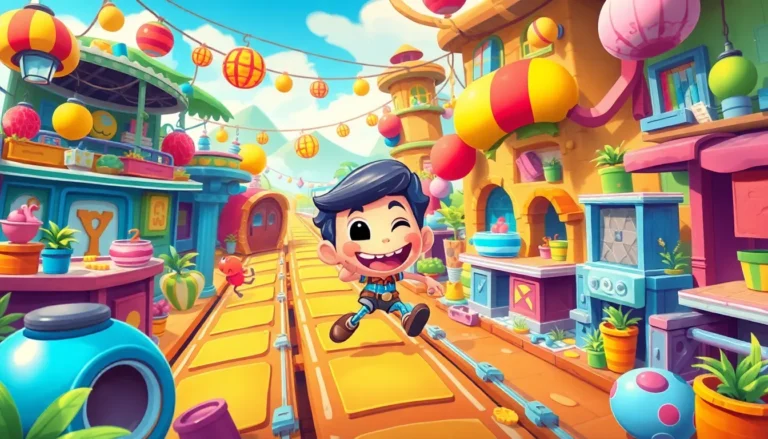In the epic showdown of gaming giants, two titans stand tall: Roblox and Fortnite. Each boasts a massive fanbase and a unique charm that keeps players glued to their screens. But which one truly wears the crown of popularity? Is it the blocky creativity of Roblox or the battle royale frenzy of Fortnite that has captured the hearts of millions?
Table of Contents
ToggleOverview of Roblox and Fortnite
Roblox and Fortnite represent two major forces in the gaming landscape. With over 200 million monthly active users, Roblox attracts players through its unique user-generated content and diverse gameplay options. Players engage in creating their own games using simple development tools, fostering a vibrant community of creators.
Fortnite, on the other hand, boasts around 125 million players, captivated by its fast-paced battle royale mode. The game’s regular updates and limited-time events maintain excitement, drawing in players eager for new experiences. Its well-known building mechanics add a strategic layer to combat, distinguishing itself from other shooters.
Both platforms host major online events, but Roblox’s events exhibit a wide range from concerts to virtual world explorations. Fortnite’s live events, such as in-game concerts featuring popular artists, capture attention, serving as cultural milestones. These events enhance player interaction, boosting engagement and social experiences.
Monetization strategies vary between the two. Roblox generates revenue through its virtual currency, Robux, which players use to purchase in-game items. Fortnite offers a free-to-play model paired with in-game purchases, mainly focused on cosmetic items. This financial framework supports robust ecosystems for both titles.
In terms of demographic reach, Roblox appeals to younger audiences, predominantly children and teens. Fortnite attracts a slightly older demographic, expanding its appeal to teenagers and young adults. Each game’s community contributes to its identity, shaping gameplay and social interactions.
Overall, Roblox and Fortnite present distinctive experiences, each with impressive player bases and unique features. Popularity depends on individual preferences for creative expression versus competitive gaming.
Popularity Metrics
The popularity of Roblox and Fortnite can be gauged through various metrics that highlight player engagement and community involvement.
Player Base and Community Engagement
Roblox maintains a monthly active user count exceeding 200 million. This substantial base thrives on user-generated content, leading to a highly interactive community. Players frequently engage in creating and sharing their own games, fostering creativity. Contributions from various creators enrich the platform, enhancing gaming experiences. Conversely, Fortnite attracts about 125 million active players who enjoy its dynamic, competitive environment. Community engagement flourishes through team play and in-game events, which strengthen bonds among players. Both platforms excel at retaining user interest through community-driven initiatives and events.
Streaming and Social Media Presence
Streaming platforms serve as vital channels for both Roblox and Fortnite. Twitch and YouTube host numerous Roblox creators who showcase unique game plays and tutorials, resulting in significant viewer engagement. Roblox has strong streaming activity, contributing to its popularity. Meanwhile, Fortnite dominates social media discussions, with frequent posts showcasing tournaments and updates. Engaging content, including gameplay highlights, memes, and challenges, captivates audiences online. Through strategic partnerships and collaborations, both games attract viewers and players, further amplifying their presence in the gaming community.
Game Features and Gameplay
Exploring the distinct features of Roblox and Fortnite highlights their unique gameplay experiences. Each game captivates players differently, engaging diverse audiences.
Visuals and Graphics
Roblox utilizes a blocky, vibrant aesthetic that appeals to younger players. Its simplicity encourages creativity through user-generated content and game design. Fortnite showcases high-quality, stylized graphics, drawing players into its immersive worlds. The game’s art style combines cartoonish elements with realistic textures, creating an engaging atmosphere. Dynamic visual effects enhance gameplay, particularly in combat and building scenarios. Players often appreciate Fortnite’s seasonal themes and evolving environments, ensuring a fresh experience with each update.
Game Modes and Customization
Roblox offers players an extensive variety of game modes, catering to different interests. Users can create and share experiences across genres, including adventure, horror, and simulation. Customization options abound, allowing players to modify avatars and create unique game elements. Fortnite, on the other hand, centers around its battle royale format, emphasizing competitive gameplay. Players engage in solo or team modes, with shrewd strategies influencing success. Cosmetics play a significant part in Fortnite, offering numerous skins, emotes, and items to personalize characters. Continuous updates bring new weapons and limited-time modes, enriching the overall experience.
Cultural Impact
Roblox and Fortnite significantly influence modern culture through their respective communities and trends. Both games create vibrant ecosystems that extend beyond gaming.
Memes and Trends
Fortnite’s dances and emotes have become viral sensations, often featured in memes across social media platforms. These trends reflect broader pop culture influences. Roblox, meanwhile, cultivates a diverse range of user-generated content, leading to unique in-game experiences shared online. Creators often post gameplay clips showcasing original games or showcasing their avatars. Influencers from both platforms drive trends, attracting more players through their content.
Esports and Competitions
Fortnite excels in the competitive gaming scene, hosting events like the Fortnite World Cup, which offers millions in prizes. These competitions generate significant viewer engagement and inspire aspiring esports players. Roblox also shares a competitive spirit, although its events focus more on creativity and fun. Its game development competitions highlight innovation and skill among creators. Both platforms enhance their communities by promoting competitive play and engaging diverse audiences.
User Demographics
Understanding user demographics reveals key differences between Roblox and Fortnite. Each game attracts distinct age groups and gender distributions.
Age Groups and Gender Distribution
Roblox primarily engages children and teens aged 6 to 18. It boasts a significant percentage of young gamers. Meanwhile, Fortnite appeals mostly to teenagers and young adults, roughly 13 to 24 years old. Players in this age bracket enjoy competitive gameplay. Gender distribution shows Roblox attracting more female players, estimated at 54%. In contrast, Fortnite’s player base has a higher percentage of male players, around 70%. These statistics highlight how both games align with their target audiences, shaping their communities.
Geographic Popularity
Roblox enjoys global popularity, especially in North America and Europe. A substantial portion of its users resides in the United States, which accounts for about 40% of its player base. Fortnite also thrives internationally, with strong engagement in regions like North America and Asia. Countries such as the United States and Brazil show significant player participation. Both games host active communities across various platforms, but geographic presence influences events and user interactions. Together, they reflect the diverse tastes of gamers worldwide.
Roblox and Fortnite each carve out their unique niches in the gaming world. Roblox thrives on creativity and community engagement, appealing to a younger audience eager to explore and create. Its user-generated content fosters a vibrant environment where players can express themselves.
On the other hand, Fortnite captivates players with its competitive battle royale format and dynamic gameplay. Its frequent updates and cultural events keep the excitement alive, attracting a slightly older demographic.
Ultimately, the choice between Roblox and Fortnite hinges on personal preferences. Whether a player seeks creative freedom or competitive thrills, both platforms continue to shape the gaming landscape in significant ways.






